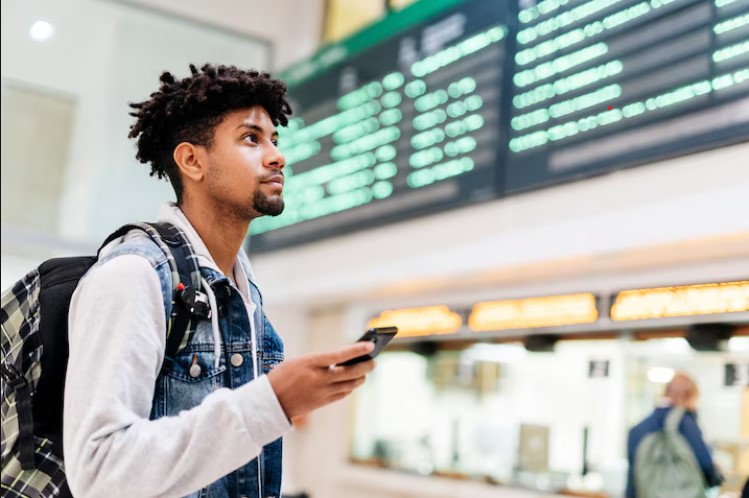

Tropical cyclones are unpredictable so being prepared and knowing your options in case of a storm are key when travelling during hurricane season.
Photograph by Jordan Lye; Getty Images
From what to pack to whether travel insurance will cover you, here’s what you need to know about travelling during tropical cyclones.
Long balmy days, sparkling turquoise waters — these are the classic ingredients of a tropical break. But risk going during the hurricane season and you could end up looking at a very different picture. It doesn’t necessarily mean trips have to be off the agenda though. In fact, for some, off-season prices and the lack of crowds make hurricane season a particularly attractive time to travel. Here’s how best to prepare.
Hurricane, cyclone and typhoon — what’s the difference?
Collectively known as tropical cyclones, hurricanes, cyclones and typhoons are all essentially the same thing: powerful, rotating storms that form over tropical or subtropical waters. The main difference is where they’re found. The term hurricane is used for storms in the North Atlantic and eastern Pacific, affecting mainly southern US states, the east and west coast of Mexico and most Caribbean islands. Typhoons refer to storms in the northwestern Pacific, which typically affect Southeast Asian countries like Vietnam and the Philippines, as well as their East Asian neighbours China and Japan. Meanwhile, storms in the South Pacific and Indian Ocean are known as cyclones: these affect South Asian countries like India and Bangladesh, East African nations like Mauritius, and parts of Australia.

Collectively known as tropical cyclones, hurricanes, cyclones and typhoons are all essentially the same thing: powerful, rotating storms that form over tropical or subtropical waters.
Photograph by Simon Gakhar; Getty Images
How do tropical cyclones form?
Tropical cyclones can only form when certain conditions are met. A key condition is that ocean surface temperatures must reach at least 26C; this encourages the water to evaporate quickly to form rain clouds. As the water vapour rises, it warms the air around it, which also rises and leaves a void. This void is filled by cooler air that warms up and rises as well, creating a cycle that builds the storm system
Another key condition is that the location of the storm must be at least five degrees latitude of the Equator. The Coriolis force here, created by the Earth spinning on its axis, affects wind direction. Wind hitting the storm system from certain angles will cause it to vortex as it builds. If the perfect conditions continue, the storm will build until it becomes a tropical cyclone. But if any of the conditions change — a fall in temperature or a change in wind direction — then the storm might lose power and dissipate.
When is hurricane season?
Most people associate hurricanes with the North Atlantic season, which officially runs from 1 June to 30 November. However, the eastern Pacific hurricane season actually starts slightly earlier on 15 May and ends on 30 November. Of course, storms can also occur earlier or later. Elsewhere, typhoons in the northwestern Pacific appear year-round, but are most frequent between July and November, while cyclones tend to appear from the end of October to about May.
How should travellers prepare?
Tropical cyclones are unpredictable: sometimes they fizzle out before the storm makes landfall and sometimes they swerve away at the last minute. So, while a big storm can devastate, it’s possible that you’ll experience little more than strong wind and heavy rain. Even so, you need to have a genuine understanding of and respect for the places you’re visiting, says travel designer Tanekka Fleary, founder of Golden Grenadine Travel. You should also keep an eye on weather conditions before and during your trip. “Pack with the expectation that you could be without power or phone signal for days,” she adds. “I always recommend making sure you have a solar-powered charger, a torch, snacks and cash in small denominations.” Waterproof bags, first-aid kits and portable power banks are also worth considering.

If you’re affected by a storm, most insurers will expect you to try to recoup any costs from your travel provider first
Photograph by Focus Pixel Art; Getty Images
It’s also worth checking with your accommodation provider or tour operator regarding what policies and procedures they have in place for natural disasters. “Hotels, resorts, villas and the like should have built-in features, including designated safe shelters, storm shutters and stores of food and water,” says Danielle Barker, managing director of Anguilla-based villa company Little Harbour Estates. Flexible booking policies can also come in handy if you need to cancel or reschedule your trip. And, once you’re on the ground, ensure you stay aware of emergency procedures and evacuation plans, and monitor weather updates and guidance from local authorities.
Will travel insurance cover tropical cyclones?
Coverage depends on the type of policy you have, but timing is important, too. “If you buy a policy after a storm has already formed or been named, it becomes a ‘known event’ and is unlikely to be covered,” warns Jonathan Frankham, UK and EU general manager for insurance experts World Nomads. If you’re unsure of anything, you should contact the insurance provider to double check first. And, if you’re affected by a storm, most insurers will expect you to try to recoup any costs from your travel provider first, which will draw out the process. However, if you’d rather not travel in the first place, the key is to wait and see. If a storm is predicted, flights could be cancelled and hotels could be closed, meaning a refund would happen automatically in most cases, particularly if you’ve booked it as part of a package. If in doubt, it’s worth contacting the operators — even if they won’t let you cancel, it’s possible you’ll be able to postpone, even though they’re under no legal obligation to do so.
What about travelling after a big storm?
“It’s natural for travellers to pause after a major storm, especially out of concern for local communities and uncertainty about conditions on the ground. But the truth is, tourism is often one of the fastest ways a destination can recover,” says Dona Regis-Prosper, CEO of the Caribbean Tourism Organization. “Once it’s safe and the infrastructure is ready, visitors play a vital role in helping communities rebound by supporting local jobs, small businesses and the broader economy.” As for when travel should resume, it’s really on a case-by-case basis. Typically, the local tourist board will issue an update when the destination has reopened. You can also check with your tour operator or accommodation provider.




Leave a Reply